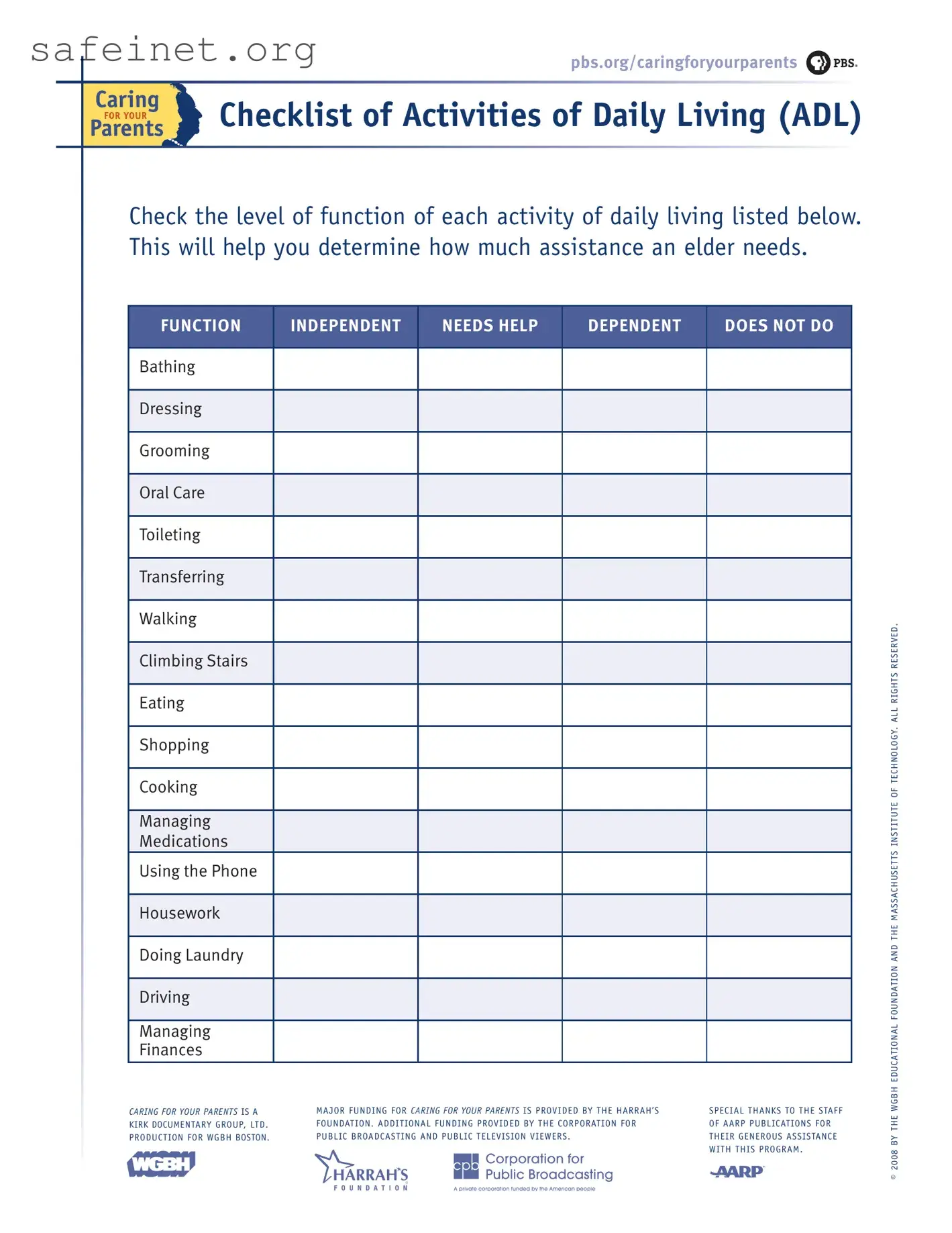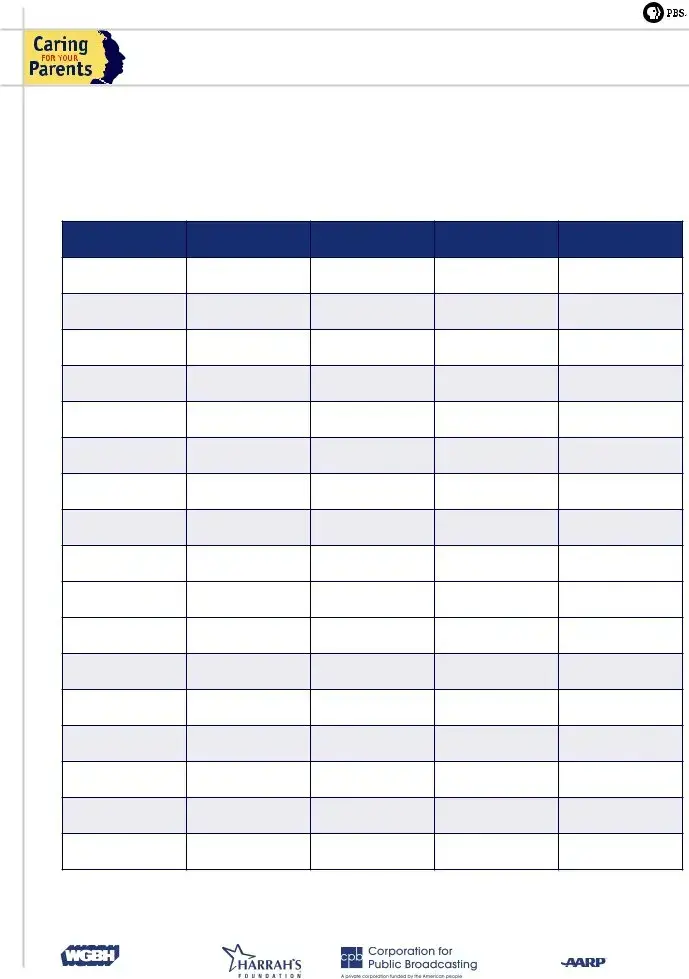What is the Checklist Daily Living form?
The Checklist Daily Living form is a valuable tool designed to assess the level of assistance an elder may require in various daily activities. This checklist covers essential activities of daily living (ADLs), helping caregivers and family members identify where support is needed. By evaluating functions like bathing, dressing, and managing medications, the form provides a clear picture of an elder's capabilities.
How do I use the Checklist Daily Living form?
Using the Checklist Daily Living form is straightforward. Start by going through each activity listed on the form, such as toileting, eating, and grooming. For each activity, determine the elder's level of function, choosing from three options: Independent, Needs Help, or Dependent. By marking the appropriate category for each activity, you can create a comprehensive overview of the person’s daily living skills.
Why is it important to assess daily living activities?
Assessing daily living activities is crucial for several reasons. First, it helps identify the amount of assistance an elder requires, ensuring their safety and well-being. Second, understanding their needs can lead to better care planning, allowing family members and caregivers to allocate resources effectively. Lastly, recognizing areas of independence can promote dignity and self-esteem among elders, encouraging them to maintain their autonomy as much as possible.
Who should fill out the Checklist Daily Living form?
The Checklist Daily Living form can be filled out by a variety of people involved in the elder's care. Family members, caregivers, or healthcare professionals can all play a role in completing the checklist. It’s often helpful to approach this task collaboratively, gathering insights from different perspectives to ensure a well-rounded understanding of the elder's capabilities.
What do I do with the results of the Checklist Daily Living form?
Once you have completed the Checklist Daily Living form, use the results to inform your next steps in care planning. If the elder requires assistance, consider discussing options for support, whether that includes hiring a caregiver or arranging for family help. If the elder demonstrates independence in certain areas, celebrate and encourage that autonomy while remaining mindful of any activities where they may still need help. The form acts as a guide, helping to shape a supportive and respectful approach to elder care.

